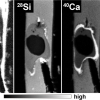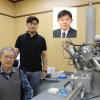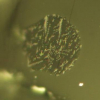SIMS News
The use of high-resolution secondary ion mass spectrometry imaging indicates that there may be up to 70 times more hydrogen in Earth’s core than in the oceans.
Researchers from Daegu Gyeongbuk Institute of Science and Technology have used SIMS to visualise up to tens of different proteins simultaneously in the same cell.
Using gas cluster ion beam secondary ion mass spectrometry (GCIB-SIMS), researchers at Penn State have directly observed functional enzyme clusters (metabolons) involved in generating purines, the most abundant cellular metabolites.
Tiny beads of volcanic glass found on the lunar surface during the Apollo missions are a sign that fire fountain eruptions took place on the Moon’s surface. Now, using secondary ion mass spectrometry, scientists from Brown University and the Carnegie Institution for Science have identified the volatile gas that drove those eruptions.




